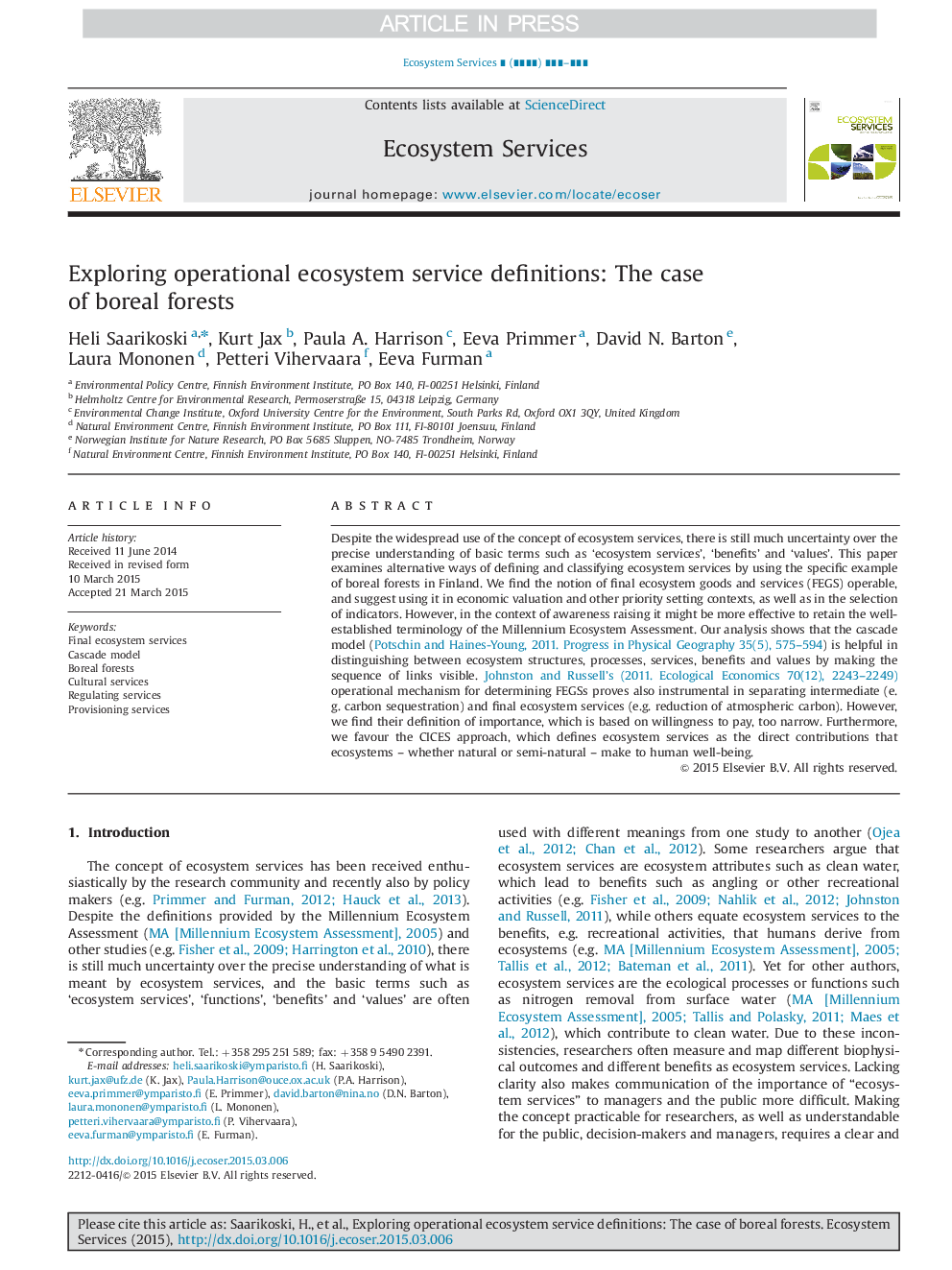| Article ID | Journal | Published Year | Pages | File Type |
|---|---|---|---|---|
| 6556738 | Ecosystem Services | 2015 | 14 Pages |
Abstract
Despite the widespread use of the concept of ecosystem services, there is still much uncertainty over the precise understanding of basic terms such as 'ecosystem services', 'benefits' and 'values'. This paper examines alternative ways of defining and classifying ecosystem services by using the specific example of boreal forests in Finland. We find the notion of final ecosystem goods and services (FEGS) operable, and suggest using it in economic valuation and other priority setting contexts, as well as in the selection of indicators. However, in the context of awareness raising it might be more effective to retain the well-established terminology of the Millennium Ecosystem Assessment. Our analysis shows that the cascade model (Potschin and Haines-Young, 2011. Progress in Physical Geography 35(5), 575-594) is helpful in distinguishing between ecosystem structures, processes, services, benefits and values by making the sequence of links visible. Johnston and Russell's (2011. Ecological Economics 70(12), 2243-2249) operational mechanism for determining FEGSs proves also instrumental in separating intermediate (e.g. carbon sequestration) and final ecosystem services (e.g. reduction of atmospheric carbon). However, we find their definition of importance, which is based on willingness to pay, too narrow. Furthermore, we favour the CICES approach, which defines ecosystem services as the direct contributions that ecosystems - whether natural or semi-natural - make to human well-being.
Related Topics
Life Sciences
Agricultural and Biological Sciences
Agricultural and Biological Sciences (General)
Authors
Heli Saarikoski, Kurt Jax, Paula A. Harrison, Eeva Primmer, David N. Barton, Laura Mononen, Petteri Vihervaara, Eeva Furman,
